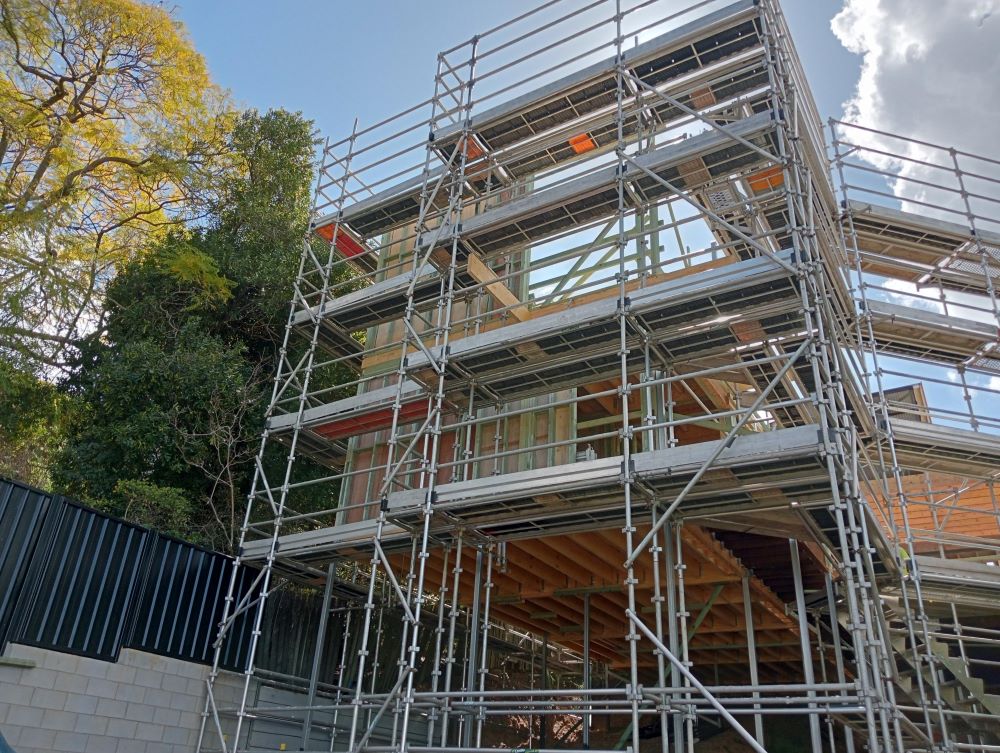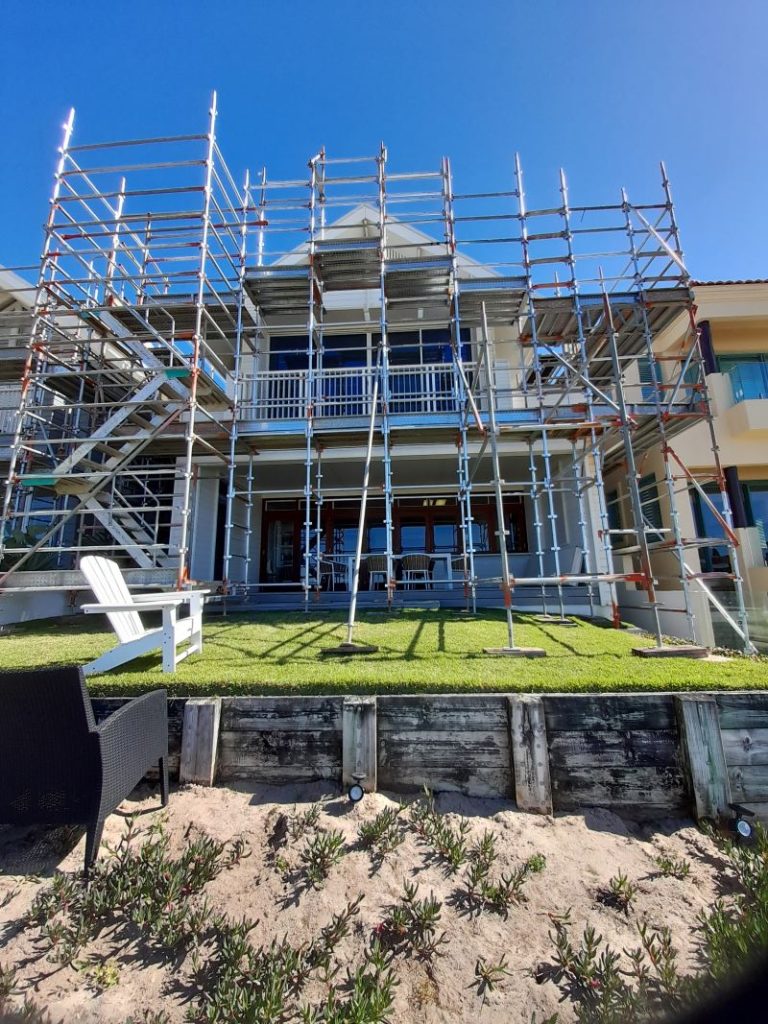Comprehensive Analysis of Aluminium and Steel Scaffolding for Optimal Construction Solutions
Choosing the right scaffolding for your construction or renovation project is vital for ensuring both safety and operational efficiency. The two most sought-after materials are aluminium scaffolding and steel scaffolding. Each material offers a distinct set of features, benefits, and suitability for varying project demands. In this detailed guide, we will delve into an extensive comparison of these two options, highlighting their unique characteristics, advantages, and ideal applications, empowering you to select the best scaffolding solution tailored to your specific project requirements.
When evaluating scaffolding options, it’s essential to understand the unique benefits of aluminium and steel scaffolding. This analysis will thoroughly examine these attributes, providing you with the necessary knowledge to make an informed choice that aligns with your project’s specific needs and operational demands.

Maximize Your Construction Efficiency with Aluminium Scaffolding Advantages
Aluminium scaffolding is celebrated for its lightweight structure and exceptional ease of handling, making it an ideal choice for projects that require frequent relocation and rapid assembly. The components of aluminium scaffolding are significantly lighter than their steel counterparts, which greatly enhances transportation and maneuverability on the job site. This feature is particularly advantageous for contractors working in tight spaces or those who need to reposition scaffolding materials frequently. As a result, this allows for a smoother workflow, enhancing overall efficiency and productivity in construction operations.
Moreover, aluminium scaffolding is renowned for its remarkable corrosion resistance. This characteristic makes it a superb option for outdoor projects or environments that experience high humidity levels, ensuring that the scaffold maintains its structural integrity and visual appeal over time. The corrosion-resistant nature of aluminium scaffolding contributes to its long-term performance and reliability, which is especially crucial for projects exposed to inclement weather conditions or moisture.
The setup and dismantling of aluminium scaffolds are typically quick and straightforward, as the components are designed for user-friendly assembly. This efficiency can lead to significant time savings on the job site, particularly for projects operating under tight deadlines. By minimizing the time spent on setup, construction teams can concentrate more on executing their tasks effectively and safely, thereby boosting overall productivity and achieving project milestones more efficiently.
Leverage the Unmatched Strength and Stability of Steel Scaffolding
Steel scaffolding is acclaimed for its superior strength and impressive load-bearing capacity, making it an exceptionally durable choice for construction projects requiring robust support. This material is engineered to withstand heavy loads and endure challenging working conditions, providing a stable platform for workers, even in demanding environments. Its rigidity and overall strength make it the preferred option for projects that involve heavy machinery or substantial materials, ensuring safety and reliability at elevated heights.
The durability of steel scaffolding is a significant advantage, particularly in harsh weather conditions or high-traffic areas where the scaffold may experience intense usage. Unlike lighter materials, steel scaffolding is designed to resist bending or deformation, ensuring a secure working environment for personnel. This reliability instills confidence and a sense of safety among construction teams, enabling them to work effectively without worry.
Additionally, steel scaffolding is recognized for its cost-effective longevity. While the initial investment may be higher than that of aluminium, the durability and extended lifespan of steel scaffolding make it a financially sound choice over time. This material can endure repeated use, resulting in fewer replacements or maintenance needs, thus providing significant savings for contractors and project managers in the long run.
When contemplating whether to choose aluminium or steel scaffolding, it is essential to evaluate the specific requirements of your project. Critical factors such as material weight, scaffold height and size, and the environmental conditions at the job site will greatly impact your final decision.
Consulting with your scaffold hire company can offer valuable insights, helping you select the most appropriate option tailored to your project’s specific demands. For additional information on when scaffolding is required and the types of projects that may necessitate it, be sure to explore our article on when to hire scaffolding.
Crucial Factors to Evaluate When Choosing Your Scaffold Material
When weighing the choice between aluminium and steel scaffolding, several important factors must be carefully considered. A thorough understanding of each scaffold material’s strength and durability, weight and portability, and cost and affordability will empower you to make an informed decision that aligns with your project’s specific needs and limitations.
Evaluating the Strength and Durability of Scaffold Materials for Your Project
Both aluminium and steel scaffolds are recognized for their strength and durability, yet they exhibit distinct qualities that may influence your choice. Generally, steel scaffolding is regarded as having superior strength and load-bearing capacity compared to aluminium scaffolding. The robust composition of steel enables it to withstand heavy loads, ensuring stability in challenging construction settings.
In contrast, aluminium scaffolds, while strong and durable, may not support exceptionally heavy loads as effectively as steel. Therefore, it is imperative to evaluate your project’s weight requirements meticulously to determine which scaffold material best aligns with your operational needs and safety standards.
Examining Weight and Portability Characteristics of Scaffolding Options
Aluminium scaffolds have a distinct advantage concerning weight and portability. Their lightweight design allows for significantly easier handling and transportation compared to their heavier steel counterparts. This characteristic is particularly beneficial in smaller-scale projects or situations where scaffolding needs frequent repositioning, as it reduces physical strain on workers and enhances overall job site productivity.
Although steel scaffolds may be heavier, they still provide a degree of portability; however, they generally require more effort and manpower for transportation. By understanding the relevant weight and portability aspects of your project, you can ensure efficient and safe scaffold use throughout your operations, leading to improved job site dynamics and workflow.
Uncover the Unique Advantages of Aluminium Scaffolding for Your Projects
Upon evaluating the various scaffold materials available, aluminium scaffolding presents a plethora of unique advantages that make it a preferred choice for numerous construction and renovation endeavors.
Experience Effortless Handling with the Lightweight Design of Aluminium Scaffolding
A key advantage of aluminium scaffolding is its lightweight design. Compared to steel scaffolding, aluminium is significantly lighter, enhancing its manageability and transportability. This characteristic not only accelerates assembly and disassembly but also contributes to a more efficient workflow, ultimately reducing the overall project timeline. Additionally, the ease of handling significantly boosts worker productivity, minimizing the risk of fatigue-related accidents and improving overall safety on site.
Outstanding Corrosion Resistance for Enhanced Longevity and Performance
Aluminium scaffolding showcases exceptional corrosion resistance, making it an ideal choice for various environmental conditions. Unlike steel, which is prone to rust and deterioration, aluminium’s natural resistance to corrosion ensures it maintains its structural integrity even when exposed to moisture or outdoor elements. This feature is particularly beneficial for projects conducted in damp or humid conditions, guaranteeing that the scaffold remains safe and effective throughout its operational lifespan.
Boost Efficiency with Streamlined Assembly and Disassembly Processes
Another significant benefit of aluminium scaffolding is its quick assembly and disassembly capabilities. The lightweight components, along with user-friendly connectors and locking mechanisms, simplify the setup process. This efficiency is particularly valuable in time-sensitive projects or when scaffolding requires frequent relocation. The rapid assembly and disassembly associated with aluminium scaffolding save time and help reduce overall labor costs, providing a financial advantage for project managers aiming to optimize their resources.

Examine the Unrivaled Advantages of Steel Scaffolding for Your Construction Projects
Steel scaffolding offers numerous benefits that make it a top choice among contractors and builders when selecting the optimal scaffold for construction projects.
Harness Unmatched Strength and Load Capacity with Steel Scaffolding
One of the primary advantages of steel scaffolding is its unparalleled strength and load capacity. Steel is well-known for its exceptional durability and ability to support substantial loads, making it ideal for projects where scaffolding must bear significant weights. Steel scaffold systems are meticulously designed to provide workers with a stable and secure platform, ensuring their safety while working at elevated heights and in challenging environments.
Benefit from Remarkable Durability in Extreme Environmental Conditions
Steel scaffolding is resilient against various environmental factors, making it suitable for harsh conditions. It can withstand adverse weather elements, including high winds, heavy rain, and extreme temperature variations. This durability ensures that the scaffold remains stable and secure, thus establishing a safe working environment for construction teams. Whether addressing projects such as gutter replacements or other tasks that necessitate scaffolding in demanding conditions, steel scaffolding is engineered to endure the rigors of the job.
Unlock Cost-Effective Longevity with Steel Scaffolding Solutions
Steel scaffolding is widely recognized for its exceptional longevity and overall cost-effectiveness. Its inherent durability ensures that the scaffold can withstand numerous construction projects over extended periods. Unlike other materials, steel scaffolding does not degrade quickly, reducing the need for frequent replacements or repairs.
To determine the most suitable scaffold material for your specific project, you must carefully assess your needs, consult with industry professionals, and consider safety standards and budgetary constraints.
Follow These Essential Steps to Select the Perfect Scaffold for Your Project
Selecting the right scaffold for your project requires a meticulous assessment of your unique needs. By thoroughly evaluating your project requirements, consulting with professionals, and considering safety and budget constraints, you can make a well-informed decision that aligns with your operational goals and enhances project efficiency.
Thoroughly Assessing Your Project Requirements for Effective Scaffold Selection
Begin by evaluating your project’s specifics and the tasks that necessitate scaffold support. Key considerations include the structure’s height and configuration, the expected duration of the project, and any specialized requirements that may arise.
For instance, scaffolding for an apartment complex will have distinct specifications compared to scaffolding or guard rails for gutter replacement. By thoroughly understanding your project needs, you can determine the appropriate type and configuration of scaffold that will best suit your operational objectives, ensuring on-site safety and efficiency.
The Critical Role of Professional Consultation in Scaffold Material Selection
Engaging with experts, such as Cando Scaffolding, is highly recommended when navigating the complexities of scaffold selection. Our extensive industry experience ensures you receive invaluable guidance, helping you meet safety standards and regulatory requirements throughout your project.
Contact us today or request a quote to start the process of selecting the ideal scaffold for your project.
The post-Scaffold Choices: Aluminium vs Steel for Your Project appeared first on https://writebuff.com/.
The Article Aluminium vs. Steel: Choosing the Best Scaffold for Your Project Was Found On https://limitsofstrategy.com
Comments are closed


It’s fascinating to see the spotlight on aluminium and steel scaffolding, especially considering how critical the choice of materials can be not just for safety, but also for overall project efficiency. From my experience working on various construction projects, I’ve found that the weight of aluminium scaffolding can significantly enhance mobility on-site, making it a superb choice for intricate residential renovations where access is often limited. On the other hand, steel’s durability in heavy-load scenarios undoubtedly provides peace of mind, particularly in large-scale industrial settings.
You bring up some excellent points about the balance between weight and durability in scaffolding materials. It’s interesting to consider how those choices really influence a project’s dynamics. I’ve noticed that during residential renovations, especially in older homes, having lightweight aluminium scaffolding can often ease some of the logistical headaches. When working in tight spaces, being able to quickly set up and take down scaffolding is invaluable.
You’ve hit the nail on the head with the importance of lightweight materials, especially in the context of residential renovations. Older homes often come with their own set of challenges—narrow hallways, uneven floors, and sometimes, just plain old awkward angles. Aluminium scaffolding addresses these issues beautifully. Its lightness not only makes transport easier but also allows for a quicker setup and takedown, which can be a game-changer when working against the clock or in confined quarters.
You’ve touched on some important aspects of material selection in scaffolding. The weight of aluminium does make a noticeable difference, especially in tight spaces where maneuverability is key. It’s interesting how that lightness can help teams adapt quickly to the demands of residential projects.
This analysis of aluminium versus steel scaffolding is a topic that resonates deeply with many in the construction industry. Having worked on various projects myself, I’ve seen first-hand how the choice of scaffolding can impact not just efficiency, but also worker safety.
It’s great to hear that you’ve experienced the practical implications of scaffold choice in your projects. The impact on efficiency and safety can’t be overstated—every project has its specific needs, and understanding the strengths and limitations of aluminium versus steel can make a real difference.
It’s fascinating to explore the intricacies of scaffolding materials like aluminium and steel, especially given how pivotal these choices are in shaping not just the immediate outcomes of construction projects, but also their broader implications on safety, efficiency, and sustainability. In my experience working on various renovation sites, I have come to appreciate the delicate balance between functionality and safety, particularly in environments where both are constantly tested.